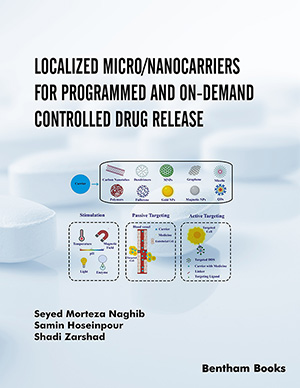Abstract
Background: Flavonoid compounds are one kind of active ingredients isolated from a traditional Chinese herb Zizyphi spinosae semen (ZSS). Studies have shown that ZSS flavonoids have significant antioxidant effects.
Methods: In this study, the Caco-2 cell monolayer model was constructed to investigate the intestinal absorption characteristics and mechanism of Isovitexin (IV), Swertisin (ST), Isovitexin-2''-O-β-D-glucopyranoside (IVG), Spinosin (S), 6'''-p-coumaroylspinosin (6-CS) and 6'''-feruloylspinosin (6-FS).
Results: The results of the bidirectional transport assay showed that the six flavonoids have good intestinal absorption in a near-neutral and 37°C environment, and the absorbability in descending order was 6-FS>6- CS>IVG>S>IV>ST. The results of carrier inhibition experiments and transport kinetics indicated that the absorption mechanism of six flavonoids was energy-dependent monocarboxylate transporter (MCT)-mediated active transport. In particular, the para-cellular pathway also participated in the transport of IV, ST, IVG and S. Furthermore, the efflux process of six flavonoids was mediated by P-glycoprotein (P-gp) and multidrug resistance protein (MRP), which may result in a decrease of bioavailability.
Conclusion: Our findings provide significant information for revealing the relationship between the intestinal absorption mechanism of flavonoids and its structure as well as laying a basis for the research of flavonoid preparations.
Keywords: Zizyphi spinosae semen, flavonoids, Caco-2 cell model, intestinal absorption, mechanism, transport kinetics.
[http://dx.doi.org/10.1016/j.jep.2008.02.006] [PMID: 18353574]
[http://dx.doi.org/10.1111/jphp.13076] [PMID: 30784084]
[http://dx.doi.org/10.1016/j.jpba.2008.09.022] [PMID: 18977107]
[http://dx.doi.org/10.1016/j.indcrop.2018.08.078]
[http://dx.doi.org/10.3389/fphar.2018.00076] [PMID: 29479317]
[http://dx.doi.org/10.4103/0973-1296.141777] [PMID: 25422554]
[http://dx.doi.org/10.1208/s12248-015-9732-x] [PMID: 25762448]
[http://dx.doi.org/10.1016/j.jpba.2008.08.025] [PMID: 18834689]
[http://dx.doi.org/10.2174/138920008786485119] [PMID: 18991586]
[http://dx.doi.org/10.1021/acsami.6b00821] [PMID: 26860241]
[http://dx.doi.org/10.1016/j.addr.2012.09.005] [PMID: 11259831]
[http://dx.doi.org/10.1007/s10565-005-0085-6] [PMID: 15868485]
[http://dx.doi.org/10.1517/17425255.1.2.175] [PMID: 16922635]
[http://dx.doi.org/10.1016/j.ejps.2008.08.004] [PMID: 18782614]
[http://dx.doi.org/10.2174/1389200218666170724110818] [PMID: 28738769]
[http://dx.doi.org/10.1016/j.ejpb.2006.08.010] [PMID: 17071065]
[http://dx.doi.org/10.1021/mp300618a] [PMID: 23834246]
[http://dx.doi.org/10.1186/s12989-017-0211-7] [PMID: 28835236]
[http://dx.doi.org/10.1016/j.fct.2014.02.003] [PMID: 24525098]
[http://dx.doi.org/10.1007/s10637-018-0644-3] [PMID: 30101388]
[http://dx.doi.org/10.1016/j.bcp.2020.113829] [PMID: 32001236]
[http://dx.doi.org/10.1016/j.ejps.2015.07.022] [PMID: 26231439]
[http://dx.doi.org/10.1371/journal.pone.0119263] [PMID: 25789809]
[http://dx.doi.org/10.3389/fphar.2017.00541] [PMID: 28871225]
[http://dx.doi.org/10.1002/hep.510240550] [PMID: 8903412]
[http://dx.doi.org/10.1007/s00204-011-0734-x] [PMID: 21766207]
[http://dx.doi.org/10.1016/j.jconrel.2017.11.012] [PMID: 29129657]
[http://dx.doi.org/10.1016/j.phrs.2017.01.035] [PMID: 28288939]
[http://dx.doi.org/10.1023/A:1012155124489] [PMID: 9453050]
[http://dx.doi.org/10.1007/BF00756522] [PMID: 8564649]
[http://dx.doi.org/10.4155/fmc.11.149] [PMID: 22098353]
[http://dx.doi.org/10.1002/0471141755.ph0702s08 ]
[http://dx.doi.org/10.1023/A:1012112820371] [PMID: 9453077]
[http://dx.doi.org/10.1016/j.foodres.2017.11.045] [PMID: 29433224]
[http://dx.doi.org/10.1016/j.cplett.2018.04.012]
[http://dx.doi.org/10.1016/S0891-5849(98)00020-3] [PMID: 9655517]
[http://dx.doi.org/10.1007/s00044-014-1241-4]
[http://dx.doi.org/10.1124/dmd.107.019943] [PMID: 18515333]
[http://dx.doi.org/10.1016/j.tplants.2015.06.007] [PMID: 26205169]
[http://dx.doi.org/10.1083/jcb.102.6.2125] [PMID: 3711143]
[http://dx.doi.org/10.1016/j.biomaterials.2017.03.023] [PMID: 28342321]
[http://dx.doi.org/10.1073/pnas.81.2.444] [PMID: 6582500]
[http://dx.doi.org/10.1016/j.apsb.2016.01.006] [PMID: 27006896]
[http://dx.doi.org/10.1016/j.bcp.2004.11.002] [PMID: 15670588]
[http://dx.doi.org/10.1002/bdd.735] [PMID: 21162116]
[http://dx.doi.org/10.1016/j.jep.2012.10.011] [PMID: 23085309]






















